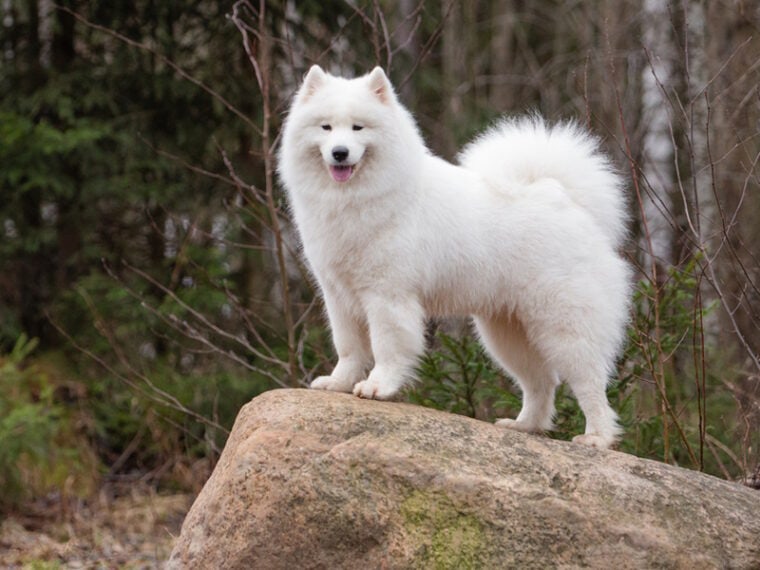
Are you curious about Samoyed dogs? These fluffy white creatures are not only stunning to look at but also hardworking and cheerful. With their regal and captivating appearance, Samoyeds are a sight to behold. Even though they might not be the most popular breed, you will definitely be mesmerized by their stunning white fur, black nose, and upturned mouth.
If you’re considering getting a Samoyed for your family or just want to learn more about them, we’ve put together a list of 11 fascinating facts about these lovely canines that will surely satisfy your curiosity.
The 11 Incredible Samoyed Facts
1. Samoyeds Originated in Siberia
The Samoyed is an impressive working dog breed with roots in Siberia. The Nenets people, formerly known as Samoyed or Yurak, used these animals as sled dogs and for herding their reindeer. This breed was officially recognized by the AKC in 1906.

2. Samoyeds Are Famous for Their “Sammie Smile”
Have you ever heard of the “Sammie Smile”? If you’re familiar with the Samoyed breed, you probably know exactly what we’re talking about. These furry pups have a way of looking like they’re grinning from ear to ear, which only enhances their irresistible charm. It’s no wonder why so many families choose to welcome a Samoyed into their homes.
Samoyeds always seem to have a smile on their face, but there’s a reason for that. This breed was bred to have black lips and a curve at the corners of their mouths. The American Kennel Club (AKC) confirms this in their breed standard.1 However, this physical trait has a practical purpose—it prevents Samoyeds from drooling. In the frigid Siberian temperatures, drool would freeze and form icicles on the dogs’ mouths and thick fur.
3. Samoyeds Are Relatively Odorless
If you’re looking for a dog that won’t leave your house smelling like a kennel, the Samoyed is definitely the way to go! These pups are practically odorless, which is a huge plus. However, just like any other dog, they should be groomed regularly to keep their coat free of mats and tangles. Otherwise, dirt and debris can get trapped, creating an unpleasant odor. So, while you may not need to bathe them as often as other breeds, give them plenty of brushings!
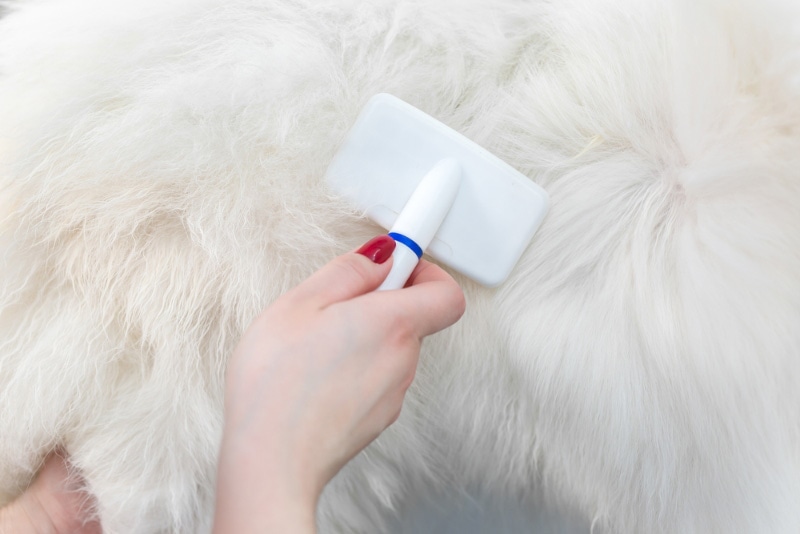
4. A Samoyed Named Maya is a YouTube Star
Maya the Samoyed, also known as the Maya Polar Bear, is a true social media superstar! With an impressive following on both Instagram and YouTube, Maya and her mother have captured viewers’ hearts worldwide. They have created some seriously soothing ASMR (autonomous sensory meridian response) videos perfect for those needing relaxation. Watch as Maya chows down on various delicious treats, creating the most satisfying crunchy sounds that will surely put a smile on your face!
5. Samoyeds Can Tolerate the Cold
Have you ever complained about feeling cold? Well, imagine living in Oymyakon, a Siberian town where temperatures can plummet to a bone-chilling minus 60 °F! It’s hard to fathom how anyone could survive in such extreme conditions. However, Samoyed dogs have a secret weapon—their dense white coat! The density of their fur provides an excellent defense against almost all the elements. In cold weather, you might even see them sleeping with their fluffy tails draped over their faces to keep warm.
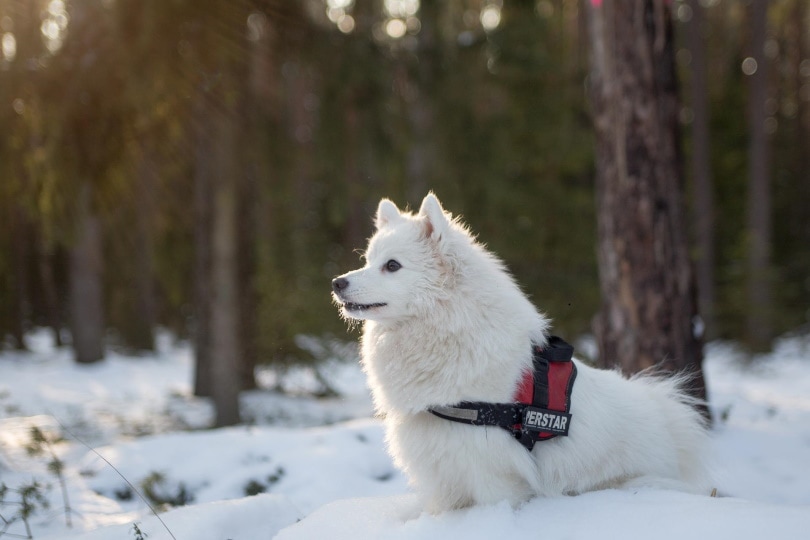
6. Queen Alexandra Was a Big Fan of Samoyeds
Dogs have been cherished companions throughout history, bringing joy to both average citizens and royalty alike. Queen Elizabeth II had her loyal Corgis, King Charles II adored his Spaniels, and the ancient Chinese Emperors treasured their Pekingese.
Queen Alexandra of the United Kingdom was a true dog lover. One breed that captured her heart was the Samoyed, which she received as a gift from the Czar of Russia. Her affection for the breed only grew stronger with time. She went above and beyond to spread awareness about these adorable animals.
7. Samoyeds and Wolves Are Closely Related
As a spitz breed, the Samoyed dog is closely related to wolves. They have distinct features like curly tails and fox-like faces, similar to other breeds like Akitas, Shiba Inus, and Chow Chows. In 2011, scientists discovered a fossil of a dog that was 33,000 years old, known as the “Altai dog.” This dog was a hybrid of a dog and a wolf, but DNA testing revealed that it was more dog than wolf. The Samoyed is the one that is most closely related to this ancient hybrid.
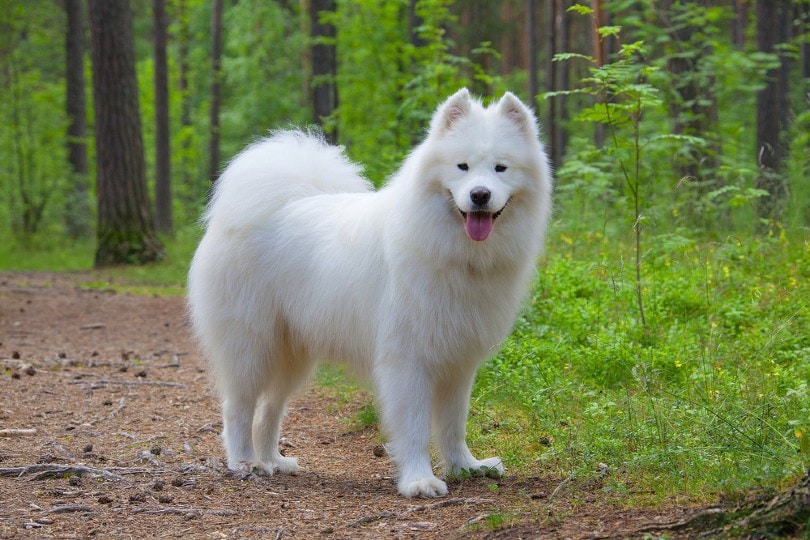
8. Samoyeds For Allergy Sufferers
If you’ve ever spent time with a Sammie, you’re probably no stranger to their shedding habits. But here’s a surprising fact—despite their furry nature, Samoyeds are often said to make excellent pets for people with allergies.
Sure, they may be heavy shedders, but they are anecdotally thought to produce less dander than other pooches. However, this isn’t backed up by scientific research which suggests that there’s no difference in the amount of allergen shed by breeds thought to be hypoallergenic versus those that are not. It is best to consult your allergist and to spend time with the individual dog you plan to adopt to find out if you are allergic to them.
9. Samoyeds Can Be Found in Colors Other Than White
Samoyeds can actually come in a variety of colors. It’s not just the classic bright white coat that you usually see. They can also have silver-tipped white, cream or biscuit coats. But pure white fur has become the standard in most parts of the world.
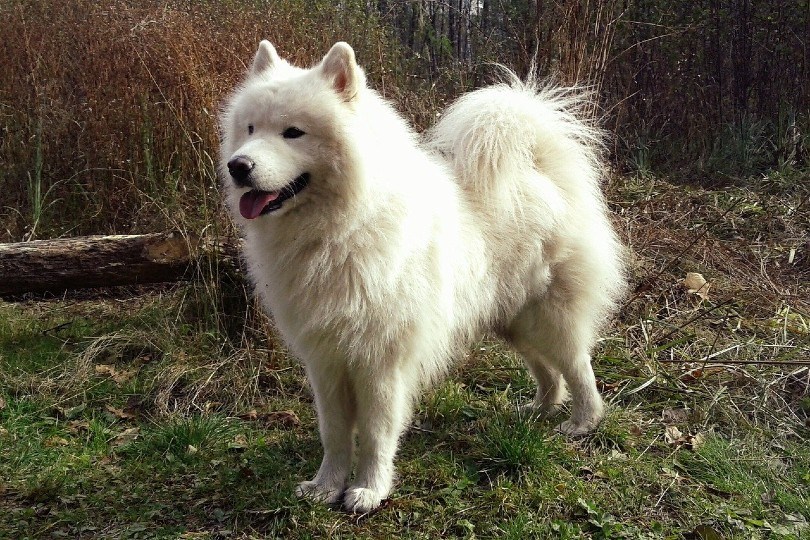
10. Samoyeds Groom Themselves Similarly to Cats
Samoyeds are absolutely adorable with their lush, double coats. It’s easy to assume that their pure-white fluffy coat would get dirty quickly, but you’ll be pleasantly surprised to know these cuties are fantastic groomers that diligently self-groom. However, if you have a Samoyed in your life, it’s still important to do your part in keeping their fur looking beautiful. Their dense coats require regular brushing and combing, but it’s all worth it for the love and companionship these furry friends bring.
11. Samoyeds Have Visited the Poles
Samoyeds are special animals known for their thick, fluffy coats and adventurous personalities. They are particularly well-suited for living in extremely cold climates. Interestingly, Samoyeds were the preferred breeds for companionship and work during expeditions to the North and South Poles.
Samoyeds have been a part of Antarctic expeditions since the 19th century, brought along by explorers like Norwegian Fridtjof Nansen and Englishman Robert Scott. These canines can survive in frigid temperatures, have the energy to work tirelessly, and be trainable for new jobs. To this day, some Samoyeds even continue to take trips to these places!
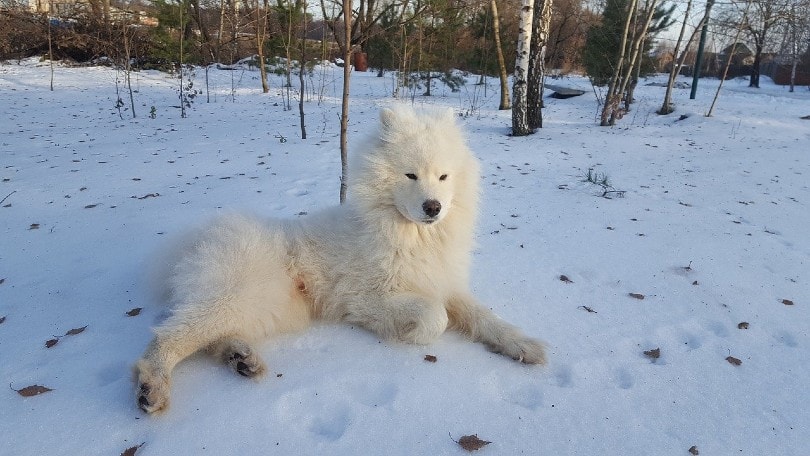
Conclusion
The Samoyed is a beautiful and smart choice if you’re looking for a furry friend who will bring joy and companionship into your home. They have an innate desire to be helpful and enjoy being given tasks. However, remember that they have high energy levels and require a fair amount of attention, care and exercise.
Despite these needs, Samoyeds are highly sought after for their loving and loyal nature. But always prepare for the responsibility before welcoming one into your family
Featured Image Credit: Sofia Dudova, Shutterstock






